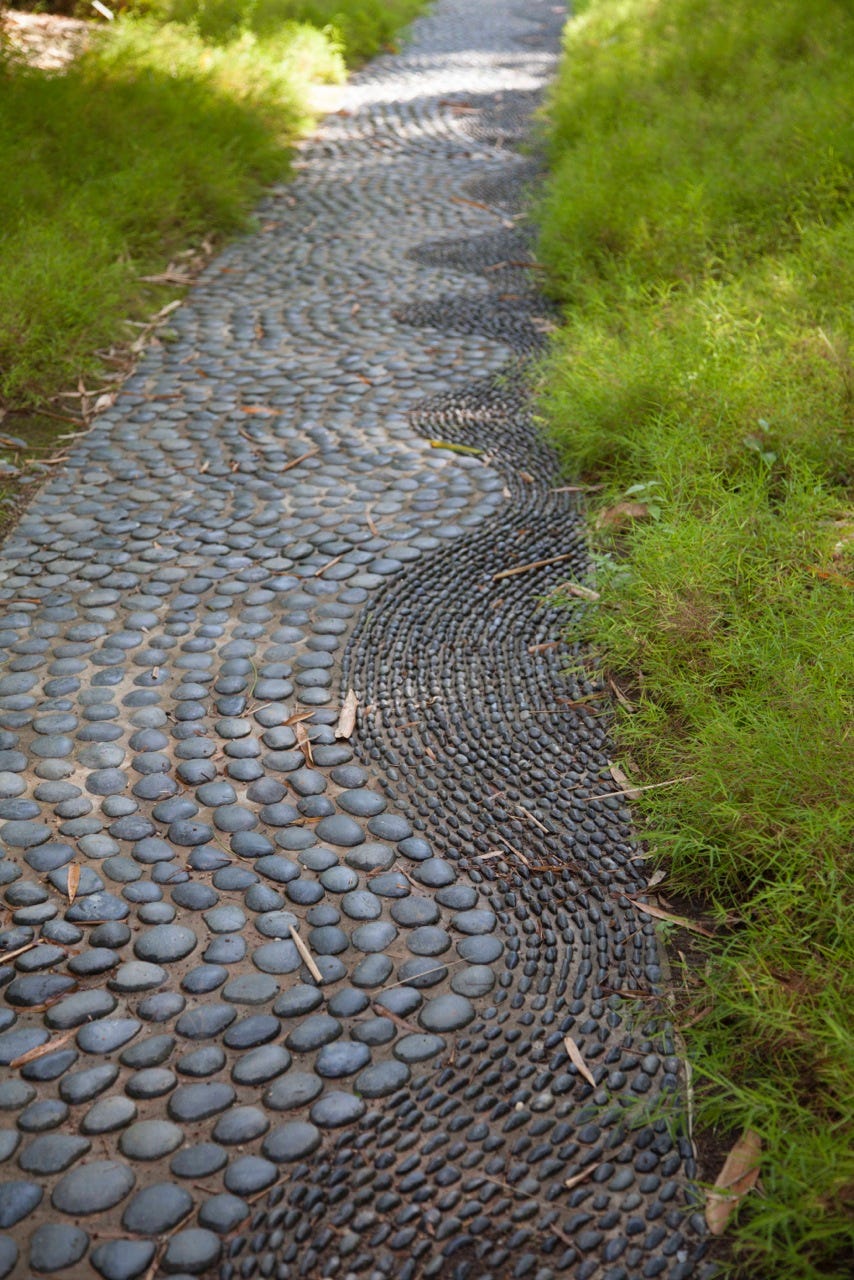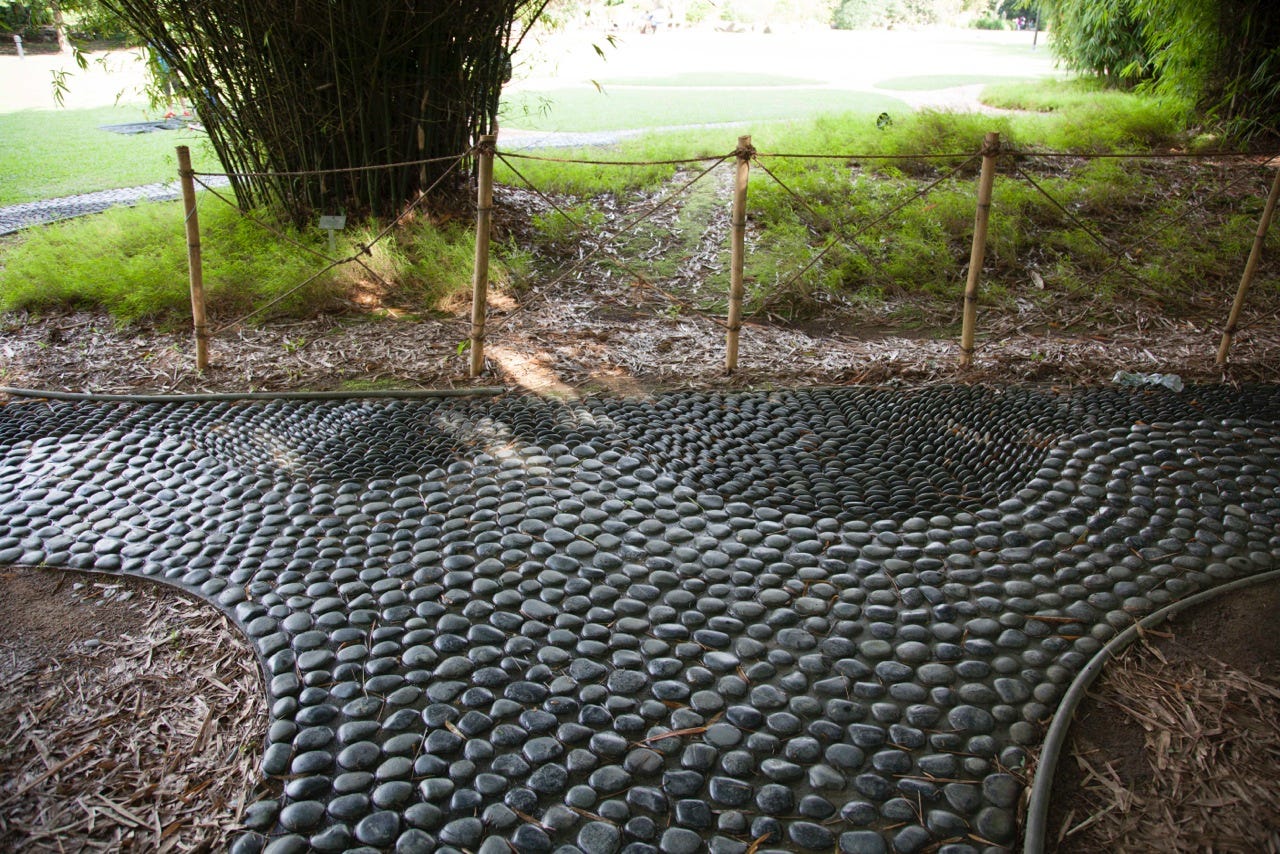Great landscape design, in my opinion, is about creating beauty, wellbeing and enhancing sustainability outdoors. Today, innovative design goes beyond traditional rose gardens (aromatherapy!) to include forest bathing, crystal meditation, outdoor yoga, sound baths, and reflexology paths. This post is about the healing benefits of reflexology paths.
I have a dear friend who loves to walk barefoot in his garden. He enjoys the sensation of the earth under his feet but I wonder if he knows how good ‘earthing’ is for his health.
Have you ever heard of the Chinese tradition of ‘Stone Stepping’? This ancient practice consists of walking barefoot on a surface of rounded, small stones for a variety of health benefits.
When the scientists at the Oregon Research Institute tested the practice of Chinese stone stepping they found that the older adult participants "experienced significant improvements in mental and physical well-being."
They said walking on rounded stones is a "simple, convenient, and readily accessible exercise program that will reduce health problems and improve quality of life of the aging population." Boom.
How does this work? The bottom of the foot has more nerve endings than any other part of the body. These are connected to the various organs ....so it follows that stimulating these nerves in the foot stimulates the organs! In short, we were designed to walk barefoot for our health.
The names for this cure-all are many: stone stepping, pebble path, foot chi path, reflexology path or barefoot health path. Whatever it is called, please consider a path of this kind as an addition to any landscape or public park.
Reflexology paths are made of smooth river rocks laid flat or turned on edge and closely packed together. They may be set in a mosaic pattern and are usually embedded in a concrete base. A combination of rounded and more jagged stones offers the walker a choice of sensation. We, who have soft soles, always choose rounded.
Walking on pebble paths is an ancient practice. You can find these paths in parks in Asia and a few in the Western world, most commonly in health spas. I would like to see more. Interest in this activity was rekindled in the late 20th century by a Jesuit priest, Father Joseph Eugster, who heads a congregation in Taiwan. Here he writes:
"In nearly every village in Taiwan they have built special paths of pebbles and every morning at 3 or 4 o'clock, people walk barefoot around the pebble path for a half hour before they go to work. Hundreds, even thousands do this. It has become a way of life. I think this is very important. We eat three times a day for our health. For me it is like praying or meditation, I need it for my bodily health and I think every body needs it." - Father Josef Eugster, (British) Reflexions , March 1995, pp. 16-17.
Father Eugster suffered from rheumatoid arthritis in his knees. In 1977, he was introduced to stone stepping and reflexology. It cured him. He gradually developed his own variations on walking on pebble paths and has taught his techniques around the world. His book is ‘Fr. Josef's New Foot Health Method’. In November 2003 Father Josef worked on the feet of Pope John Paul II to help him to recover his voice.

Walking on reflexology paths helps relieve tiredness and provides a general boost to your wellbeing. So I say, “Reflexology paths for all!” Locate them on relatively level land (no slipping downhill) and make them only wide enough for one person. You may add a sturdy hand rail for safety purposes, if you choose. A reflexology path is a perfect addition to any park or health and healing garden.
I hope to see many Foot Chi paths in the future.








